Bass Fishing Humps & Ridges | Fishing Off Shore Humps & Ridges For Bass
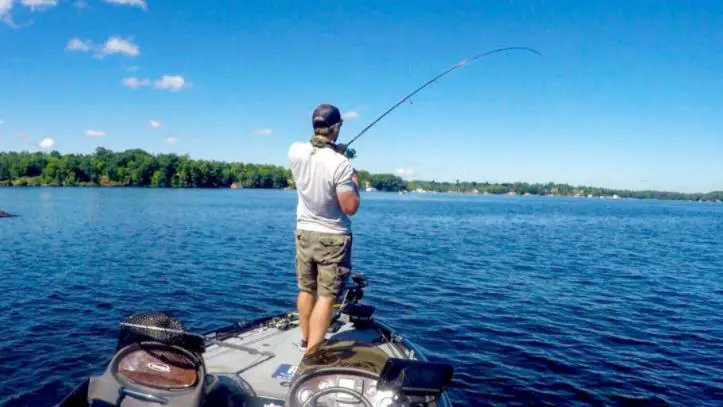
One thing is certain: not all humps are made the same.
A hump is a round or oval flat-topped shallow area surrounded on all sides by deeper water. Most humps consist of rock or sand, and may have grass or other cover on the top. The key to bass fishing humps are: (1) looking for certain sorts of humps that have a greater likelihood to hold fish; (2) knowing when to fish humps throughout the year; and (3) understanding what baits work best.
Occasionally, if you visit any large lake you’ll see tons of off shore humps… and… choosing where to start is overwhelming! And to make matters worse, most of the humps you’ll encounter may have the occasional fish near them, but the majority will have no fish at all.
To be blunt with you there are only two ways to become successful with fishing humps.
The old way is to spend hundreds (if not thousands) of hours on the lake fishing every one you come across – just hoping to catch a fish. But… for the majority of us we don’t have the time or the money to waste going that route, right?
The new way is to fishing humps is in a surgical systematic way that can instantly give you the green light to start fishing and catching bass!
Now take a second to think about this… Can you imagine yourself having the confidence to pull up to any hump and instantly know whether it can be fished or not? Can you see how many more fish you can catch in one day just knowing that? Wouldn’t that be awesome?
Heck yes it would!… Listen, If you ever got suckered into fishing at the wrong hump, you know it can be similar to being in a barren ghost town, wasting hours of your day, or forced to deal with a painful arm, or worse!
In our fishing blueprint, we’re going to help you avoid all that… let’s get started…
Key Takeaways
Thankfully, bass fishing has become second nature to me now… but that wasn’t always the case. As I spent thousands of hours watching and learning from my mentors, practicing hundreds of hours on the lake… only to fail horribly…
However, over years of honing my skill whenever I had the chance, I slowly started to create my personal off shore hump fishing blueprint for beginners, which is kinda-like my private set of strategies and tactics. Now whenever I get to the lake I use my same blueprint and I can quickly pick out the best locations that are most likely to hold fish… which allows me to avoid wasting hours of my fishing day… would you like to know more? Great, here are just some of the things in this blueprint you’ll learn how to fish off shore humps for bass:
- Understand what are the different hump types… and.. which are more likely to hold fish… and… which to avoid as fast as humanly possible!
- How your PC can get you extra bites when you’re on the water!
- How you can legally check to see if the hump actually attracts bass… even if it looks like the hundreds of others in the area… you will get your answer in less than 1 minute… and helps you avoid spending countless hours on the wrong fishing spot!
- The single best way fish an off shore hump… this strategy will allow you to catch all the fish… never worry about spooking the rest… even if fish jumps off your hook!
- Learn the best one-two punch for making bass bite when your fishing humps – even Mike Tyson would be proud!
But be warned! Go through this blueprint slowly and carefully so you don’t miss any tips that could cost you.
Fishing Humps [Primer]
As discussed earlier, a hump is a round or oval flat-topped shallow area surrounded on all sides by deeper water. Most humps consist of rock or sand, and may have grass or other cover on the top.
Humps are considered “offshore” structures… I think of these lake structures as if they were underwater islands.
Humps can be found anywhere in the lake. I have found them in coves, bays, larger arms off of the lake, and in the main lake itself.
Humps are some of the best offshore locations for anglers to fish bass because these lake structures hold bass in every season. Primarily, bass use humps to ambush baitfish.
Once you find a quality hump, fishing is easy and productive.
Where most bass anglers “beat the banks” and focus fishing the banks and shoreline, fishing offshore main lake humps for bass is often overlooked by the everyday angler.
It may seem like too much trouble to spend time finding these structures in the main lake, but this type of structure fishing can result in many more hook-ups to bass than you thought possible.
Step 1: Understand the Different Types of Humps
Now that you know what the definition of a hump is and where they can be found, it’s time to learn about the different types of humps you’ll encounter.
Most of the humps you come across will either have a hard top, or apex. The top area of the hump can be in the form of hard bedrock or shale rock. Some humps can even have grass or vegetation growing on the top.
Most will have gravel or clay sides. More often than not most humps will have at least one steeper side or a side with small step-offs or even larger ledges that drop into deeper water.
A hump can also have a ridge. Ridges are similar to humps, but are identified as having a long straight steep rocky section… the way I like to describe it is it’s kinda-like a rocky mohawk underwater.
The top of the hump or ridge may be shallow or deep depending on the topography of the lake.
To avoid any confusion, I personally will fish humps and ridges the same way.
Helpful Tip: Ridges are similar to humps, but are identified as having a long straight steep rocky section... the way I like to describe it is it's kinda-like a rocky mohawk underwater.
Step 2: Find Quality Humps
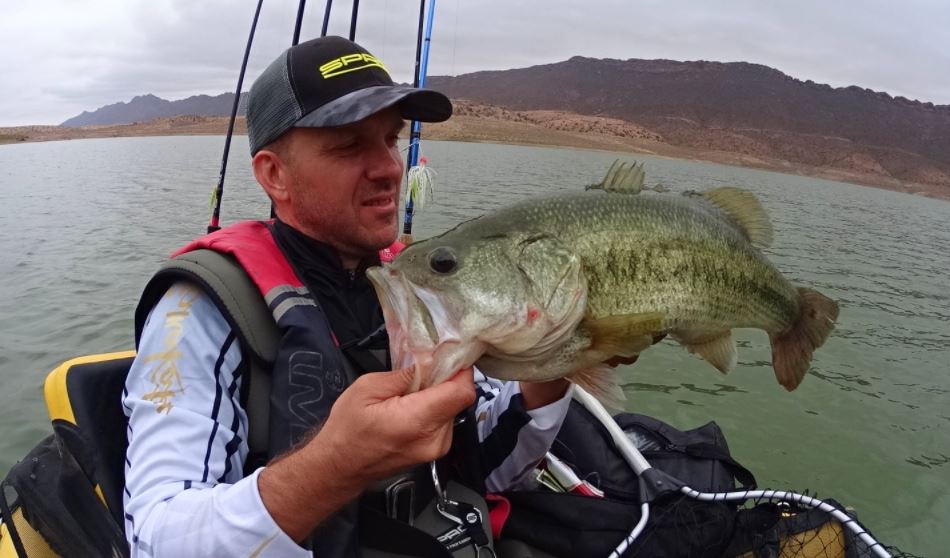
Since humps are large topographic structures they can be very easy to find using Google Maps.
To make matters even easier, you can find humps on topographic maps too!
So what can you do next? Here’s what I recommend… find the best locations that are most likely to contain a hump.
What are 3 prime locations for beginners to find a hump to fish?… but before we get into that, please note… there are more locations to learn, but I don’t want you to be overwhelmed. With that being said, if you’re going to be fishing humps for bass, these have a better than average chance of holding bass. And they’re going to be:
- (A) Humps on main lake points
- (B) Humps near secondary points
- (C) In open bays
- (D) Near current
(A) Humps on main lake points
Humps on main lake points are seldom visible from the water, however you can find them on Google maps or on a contour map. The best humps are typically in 15-30 feet of water.
The best humps tend to have at least one side dropping quickly into deep water. Bass use the steep sides to corral prey.
(B) Humps near secondary points
Bass will also relate secondary points, although more commonly in the fall in the fall and spring. In turn, they will also use humps to ambush shad migrating to the backs of the coves as the weather is cooling down.
Likewise, in the spring, bass begin to migrate into the coves to spawn. They have a tendency to stage on secondary points and hump during the pre-spawning or spawning phase.
(C) Solitary humps in open bays
One of the best places to find solitary humps are in open bays.
Most of the time you’ll notice there will be multiple humps in the bay, however the more solitary the better.
You may be asking why? Well it doesn’t give the bass a lot of options if they live in that area, so they’ll tend to congregate there.
(D) Near current
Humps and ridges near current, whether water-driven or wind-driven, are often considered the best places to find fish. Here’s why and some ways to find these types of humps:
- Attraction of Food Sources: Currents bring in plankton and other small organisms, attracting baitfish, which in turn attract larger predatory fish. The constant movement of water helps concentrate food in these areas, making them productive feeding grounds.
- Oxygenation and Temperature Regulation: Currents can help oxygenate the water and regulate temperature, creating a more hospitable environment for fish. Fish are more likely to congregate in areas with the right oxygen levels and temperatures, making humps near currents prime locations.
- Natural Resting Points: Humps provide a break in the current, allowing fish to rest without fighting the water movement. Predatory fish like bass can lie in wait, conserving energy while the current delivers food to them.
4 Ways to Find Productive Humps:
- Use of Topographic Map On Your Fishfinder: Modern fishfinders can identify underwater structures like humps and also show if they are near a river channel, where current will most likely flow.
- Observation of Water Movement: Visual clues like water breaking or a noticeable change in water flow can hint at the presence of a hump.
- Wind Direction: Paying attention to the wind’s direction can give clues about how it might be affecting the current and where the humps influenced by it might be.
- Local Knowledge: Engaging with local anglers, guides, or bait shops can yield valuable insights into the best humps in the area.
Thermocline Connection
- Identify the Thermocline (if the fall turnover hasn’t happened yet): If the fall turn over hasn’t occurred, the first step is you must locate the thermocline, where warmer surface water meets cooler, deeper water. This information helps in pinpointing where the bass are likely to be.
Choosing Specific Structures: By finding high value humps and ridges that intersect the depth of the thermocline, gives you a huge probability to locate bass.
Step 3: Identify and Scan the Hump With Your Fish Finder
Scanning for humps is actually quite easy once you get on the water.
Step 1) I strongly suggest starting with a side scan first over the deepest section of the tip point or line of docks.
Step 2) Once you identify the hump, motor over it and scan it with your 2D sonar and structure scan looking for bait and bass.
Step 1) Start with side scan
Side scan imaging is relatively new, and can show the angler what is on both sides of the boat. This can give you an idea of how big the hump may be, or if there are any additional structures nearby the top of the hump.
The side scan may show the differences in water depth between the top of the hump and the surrounding water if you move your boat to find the end of the hump top. The hump will probably show on both screens because of its normally large structure.
A ridge will appear to be similar to a point on your fish finder, not in shape but in the water depth change going from shallow to deeper water. Your fish finder will find the water depth of the top of the ridge as well as the much deeper depth surrounding the ridge when you place the boat over this area.
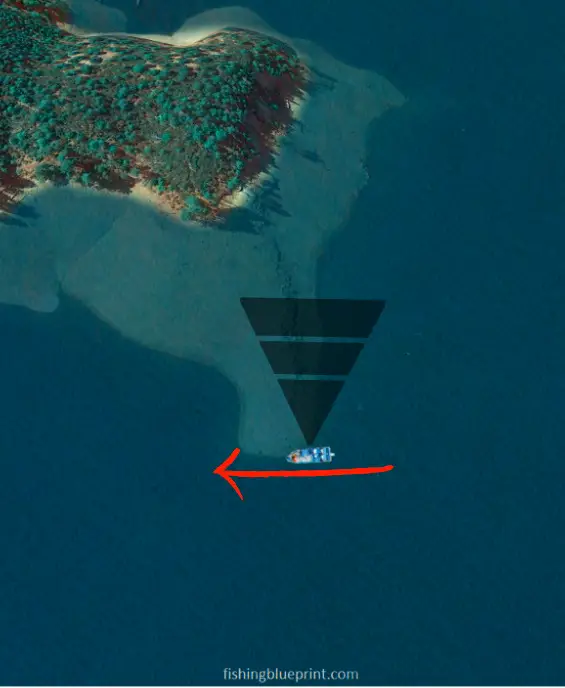
This is what it should look like with your side scan sonar (image below).
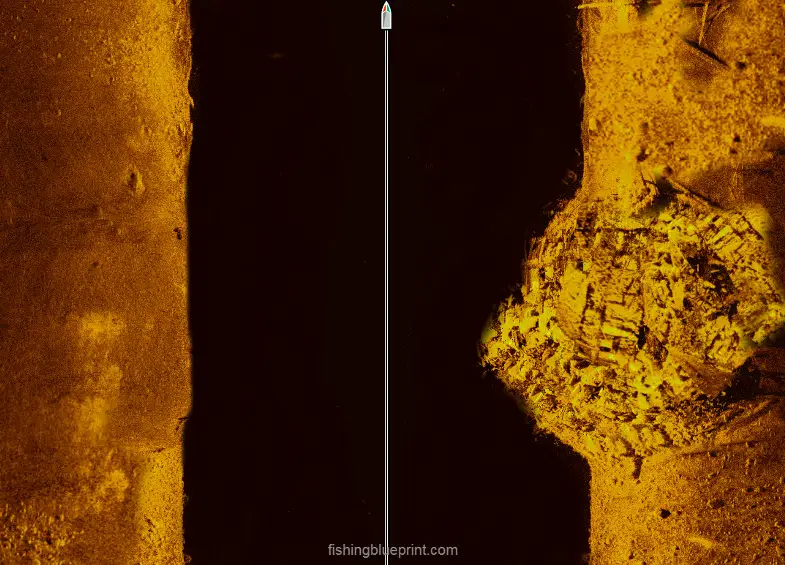
Step 2) Finish with 2D sonar and structure scan
2D Sonar
A hump (or ridge) looks like a large hill with both sides that decline from the top, kinda like a hill or a roller coaster.
Your 2D sonar will also tell you how hard the bottom is. A normal default setting for Lowrance, Humminbird, and Garmin the harder the bottom it will be more red colored.
So, if a hump shows up on your fish finder displays a thick red line that indicates a hard bottom area.
Your sonar will also have a depth reading that will show the depth of both the top of the hump, as well as the depth of water that surrounds it all around.
Use your technology such as GPS to find the graphed area on the lake. The GPS will guide you to this location so you can find more information.
Down Imaging/Structure Scan
Down imaging at the spot where you have graphed a hump on your topo map will help you know if a hump is located in the spot where you found it on a topographic map.
It almost looks like a monotone photograph.
Down imaging provides a narrow strip of the water column kinda like as if you were looking through a telescope into the water. This means you will get a limited image of some part of the hump, called a “narrow return”.
The narrow return will show you that there is a hard surface (such as rock, mussel shell bed, concrete, or metal) below you with a brighter color-tone (normally is nearly white colored if the structure is really hard).
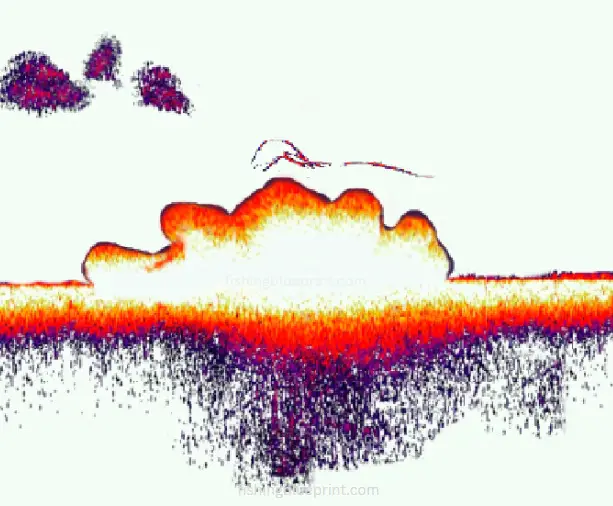
Finding Active vs. Inactive Fish
When scanning a hump you want to see the bass on top, or very close to is. This signifies the bass are actively feeding. These fish are extremely catchable anytime they are relating directly on top of hump, best of all you can typically catch them using an assortment of lures.
Look at the images below. This is a downward scan image I recreated to show you what bass look like when they’re relating to the apex of the hump, they are the large arcs. The smaller dots represent baitfish like shad.

The bass will suspend above the deeper water, off to the side of the point are not actively feeding. As an illustration in the picture below, they are off to the side of the hump and are harder to catch.
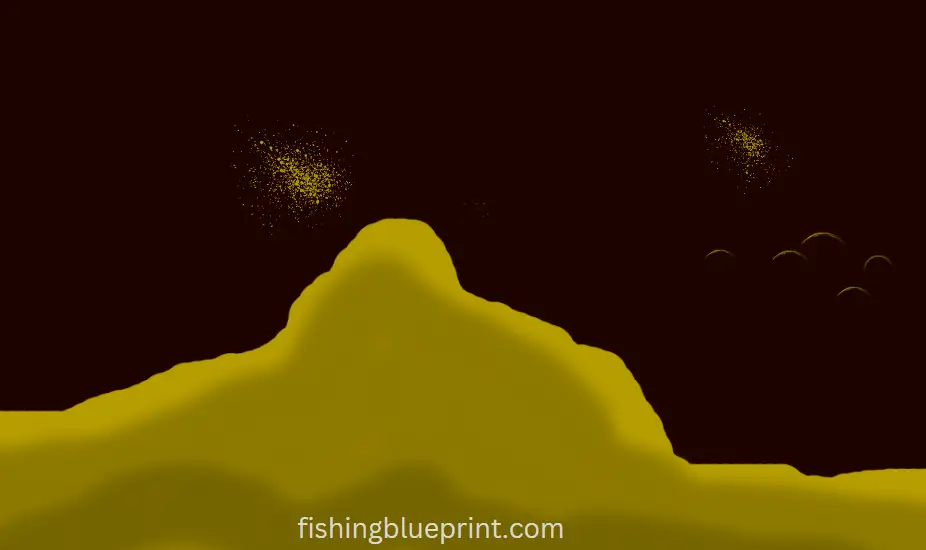
Step 4: Fishing The Hump Systematically
Below are some strategies for securing a sure bite when fishing humps and ridges;
1) Location, location, location. The right location is everything when fishing humps. Idle areas like main lake points, middle of coves with secondary points, and in the middle of bays that we discussed earlier; these areas produce the most bass.
2) Identify the edges of each side of hump with a marker buoy 10-15 yards off to the side.
Begin structure fishing the top first and then the sides.
The first side you should focus on is the side that faces any current which normally is going to be the steepest side.
Another fishing strategy is to keep your boat above the hump and crisscross the top and sides of the hump to cover the water in the area you have marked with buoys. This method may spook the bass near the hump, so it is only suggested for very deep humps or ridges.
The next side you should then fish is the side that has some form of wind-driven current that pushes into the hump.
Bass will often jockey and position themselves to the ‘front of the line’ in order for themselves to eat first. They will set up right on the edge facing the current waiting to ambush prey.
Once you catch a fish off the hump the hump immediately drop another marker buoy or save a waypoint on your fish finder unit. That way after you land the fish you can line up the boat exactly how it was when you caught the first fish.
Helpful Tip: Ribbon-tailed worms, crankbaits, hair jigs, swim baits, and even big spoons are excellent to fish humps with.
3) Start with using a moving bait. Bass live on humps all year long, especially in the summer. For this reason, moving baits would easily draw the attention of the bass and lure them easily towards you. Flutter spoons, buzzbaits, crankbaits, soft plastic swimbaits, spinnerbaits, Chatterbaits, jerkbaits, swim jigs, hair jigs, and underspin jigs when the bass are aggressive.
4) Slow it down to pick off the more reluctant bass. If you’re not getting any bites from the fast moving baits it will be time to slow it down.
My hats off to Justin at Fish The Moment YouTube channel, he has taught me so much when it comes to offshore structure fishing. From watching and learning what he does, he likes to use a lead football jig… and while this gave me some success, I really have the best success when I use a tungsten football jig. Here’s why…
Tungsten is a denser material than lead which means you get a heavier weight in a smaller package. Tungsten is nearly twice as hard than lead, and is about ½ the size of a lead jig,
The smaller sizes also means less drag… which also means it has a quicker fall rate for the same sized lead jig.
Lastly, since it’s more compact there is less chance for hangups.
My second or third choice for baits are going to be a Texas rig or Carolina rig with a compact soft plastic creature bait.
I’ll let the depth determine if I use a Texas rig or a Carolina rig.
- Deep humps in >12 feet of water, I’ll fish a Carolina rig.
- Shallow humps <12 feet I’ll go with a Texas rig.
And yes, I’ll thread on a tungsten bullet weight for the same reason that I outlined above.
Weedless drop shot rig and weedless wacky rig Senko are also great for fishing humps without getting hung up or snagged.
6) And finally, be stealthy. During the process of checking the brush pile to see if there are bass around it and casting your bait, try to be as quiet as possible. You might not necessarily have to be quiet, but let the noise be steady. Do not rev your engines and maintain a steady rpm.
My Personal Notes: My 2 Biggest Problems with Fishing Offshore Humps
I have to be honest, fishing offshore humps was one of my biggest challenges I had to overcome learning how to fish for bass.
Prior to fishing offshore structures like these, I spent most of my time fishing other structures such as banks, points, creeks, and docks.
To make matters worse, I had difficulty fishing an area without any cover that I could see. I was used to seeing areas on the shoreline that were easy to see and to aim at when casting.
Twisting the knife a little more, I have to tell you that I’m not perfect… I have ADD, and it’s really tough for me to be trolling and scanning what seemed for hours not finding anything… I felt like going crazy sometimes!
Helpful Tip: At first, I didn’t even understand how to find these structures in the lakes I fished and I had a tough time reading contour maps. But after dedicating a solid summer I slowly learned how to identify what makes a good hump over all others.
And then over time, I was able to quickly and easily identify quality humps even before getting to the lake… and… once on the lake I focused my time on the pre-selected humps.
Now I was able to find and fish humps faster than ever before!
The culmination of the research and countless hours of learning how to fish these offshore structures gave me this fishing blueprint that I published for you!
Locating humps and ridges is a process. It is helpful to know that once they find humps and ridges, those structures will still be there in the future. Then you can return to fish them over and over again!
So in summary, really I hope I was able to give you a tip or two… maybe leave you in a better position from where you started before reading my blueprint for fishing humps.
Take care and tight lines!
— George
Want To Learn Where To Catch More Bass? Checkout These Articles...
- Bass Fishing CREEKS The Easy Way (In Less Than 10 Minutes)
- Warning: Bass Fishing HEAVY GRASS? [15+ Mistakes To Avoid]
- Bass Fishing POINTS in 5 Quick & EASY Steps!
- Complete 5-Step DOCK Fishing Formula
- Bass Fishing LAYDOWNS [Complete Guide + Pictures]
- Little Known Pattern for Fishing TREES for Bass.. Now and Forever
- Complete Formula For BASS FISHING ROCKY BANKS & RIPRAP
- The 5 TRUTHS about Bass Fishing BRIDGES and Avoid Wasting Time On Techniques That Don’t Work!
- Bass Fishing BRUSH PILES To Catch The Most Bass In Minimum Time!
- The 7-step Secret Formula for Bass Fishing LEDGES – Even a Complete Fishing Noob Can Use and Be 100 Times More Potent Than the Best B.A.S.S. Professional!
- The Single Best Guide to Fishing SHELL BEDS… and… Do It Fast!
- 5 Basic Elements Of Fishing HUMPS AND RIDGES No One is Talking About!
- 5 Crucial (and Unusual) Tactics You Must Do When Bass Fishing ROADBEDS!
- Top 25 Summer BANK Fishing Tips (Never Get Skunked Again)
- [EXPERT REVEALS] Bass Fishing In MUDDY WATER Secrets – 27 Tips & Mistakes To Avoid Today!
- 31 Best Tips for Bass Fishing At NIGHT (Complete Guide)
Other Bass Fishing Articles Just For You...
Selecting Early Summer Bass Fishing Lures [Avoid 5 Common Mistakes]
A Complete Buyer’s Blueprint On The Best Early Summer Bass Lures On The Market Today! When it comes to bass fishing, choosing the right lure
Early Summer Bass Fishing [Avoid These 3 Sneaky Lies]
Learn these closely guarded secrets early summer bass fishing … and… dramatically boost your advantage over other anglers! Late spring to early summer bass fishing
Fear The Finesse? 7 Ned Rig Fishing Secrets Exposed!
Conquer the Fear of Finesse… and… Unlock the Potential Ned Rig Fishing – TODAY! Fellow Angler… Like most of you I’m pretty set in my
Fishing Spawning Bass [18+ Lures & Gear]
Get Ready For The Spawn Now When bed fishing, stealth is of the biggest essential tip. Instead of racing forward with a trolling motor, anglers
[2024 Editors Choice] Picking The Best Bass Fishing LINE For ANY Budget
What is the best bass fishing line? | What is a good fishing line for bass? The best type of bass fishing line is based
Drift Sock Basics – What It Is A Drift Sock & How To Use It [2024 Quick Start Guide]
What Does A Drift Sock Do? | Why Use A Drift Sock? photo cred: WLUK We’ve ALL been there… you work your butt off the
